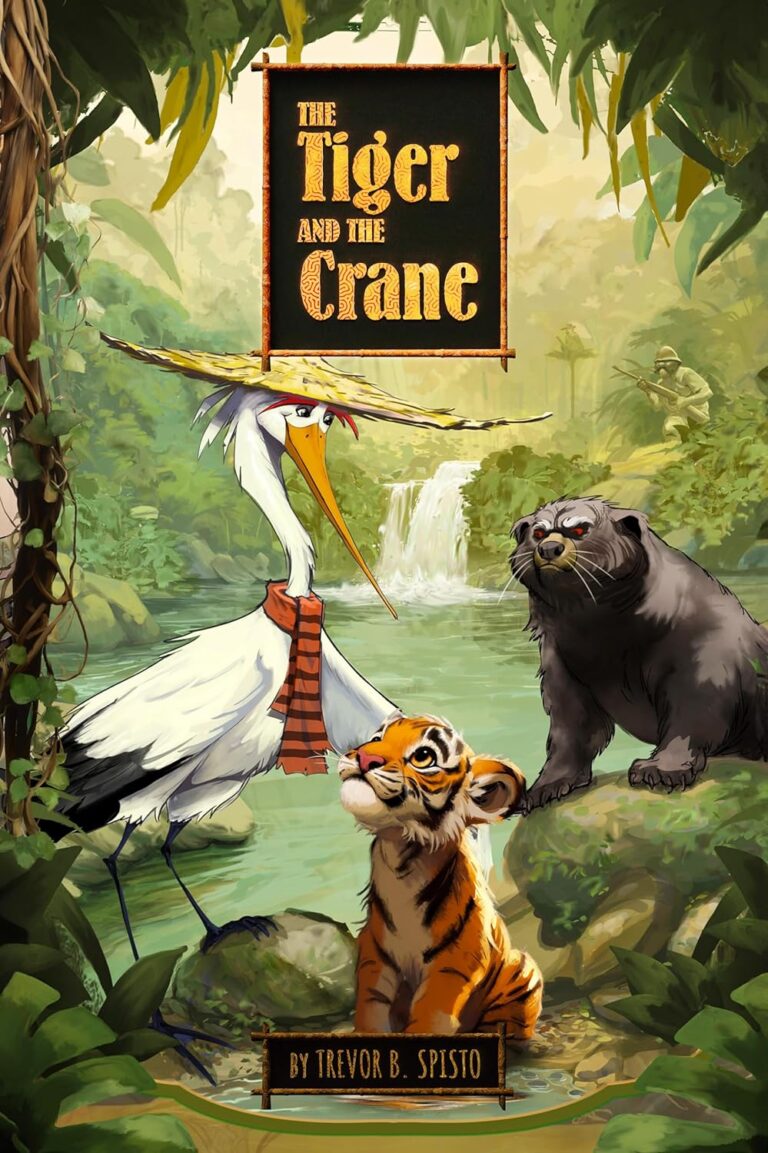Trevor B. Spisto’s THE TIGER AND THE CRANE is a fable-like middle grade novel about a village of animals who adopt a tiger as one of their own. A crane named Mung, one of three candidates to replace the village Master, finds the baby tiger, whom he names Xingfu, in the forest one day while scoping out human hunters. Little Xingfu’s mother is shot by a hunter, leaving him alone and without a home. When Mung brings Xingfu to the village, the other animals fear the tiger will grow up to be a dangerous creature, but Mung assures them he will not, so long as no one tells him he is a tiger and what tigers are capable of.
Over the years, Xingfu grows from a bumbling cub to a precocious young tiger who still meets resistance from his goat, red panda, and rabbit neighbors. As one of the other candidates to replace the Master (a binturong named Ku) says, he ruins everything he touches. When Xingfu tries to rescue a toy bouncy ball from a hawk, for instance, he accidentally punctures it. When he tries to refill his otter neighbor’s dry well, he accidentally floods his house. Xingfu’s misadventures offer entertainment in the form of physical humor and sarcastic remarks from his friends, as well as drama that amps up suspense while the intensity of the events escalate. Village contention with the growing tiger culminates in a striking confrontation that concludes with a message of hope in the struggle between nature and nurture.
The third and final candidate to replace the Master, a monkey named Qingyang, functions as the book’s narrator. His jovial voice lends intimacy, but frequent changes in point of view throughout the story are jarring. While the book features a first-person narrator in Qingyang, the narrative often dips into third person and follows other characters as they experience events outside his observation. In particular, when Mung soars above the forest to track some hunters’ progress, the narrative centers on the crane’s point of view. It is not until the book’s epilogue that Qingyang admits he interviewed everyone involved and “embellished” in places so that he could tell the story.
Qingyang is exuberant and optimistic, Ku is grumpy and pessimistic, and Mung is nervous yet wise; each has strong skills that contribute to their likability and potential as candidates to replace the Master. Sweet Xingfu is an endearing protagonist, and the many inhabitants of the village have rounded personalities (such as the protective mother goat who treats Xingfu like her own child when he proves he won’t hurt her kids).
There are some incidents of minor violence, including a scene where Xingfu attacks a human hunter. The members of the village fear both the hunters and the carnivores of the forest, whom they call “blood eaters.” They are all mostly herbivores, though they do eat fish.
The five illustrations by Frankell Baramdyka evenly spaced throughout the book are gorgeous renderings of the animals in a Disney-like style. More would be welcome, but the book is strong enough as is.
Despite its perspective jumps, Trevor B. Spisto’s THE TIGER AND THE CRANE is a charming story for young readers with well-rounded characters and endearing humor.
~Aimee Jodoin for IndieReader


